
Only a crypto enthusiast living under a rock will not have heard of Solana. The blockchain’s rise in the last two years has been meteoric, to say the least.
The founding developers of this network have lived up to the title of their whitepaper: ‘a new architecture for a high-performance blockchain.’ Solana is one of the fastest and most low-cost blockchains on the planet.
It is an application-building protocol for industries involved with decentralized finance, NFTs (non-fungible tokens), web 3.0, and, of course, gaming. So, let’s explore the top 6 gaming projects secured by the Solana blockchain.
1. Star Atlas (ATLAS)
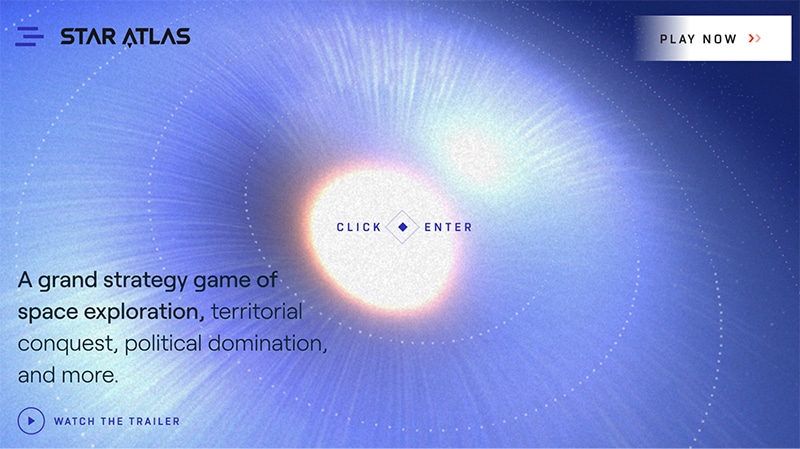
Star Atlas is Solana’s most prominent gaming project by trading volume. According to CoinMarketCap, its utility currency, ATLAS, is the 32nd most traded gaming token in the markets (#366 overall).
While nowhere near the levels of Decentraland and The Sandbox, this game is a highly cinematic metaverse as it uses Nanite graphics technology from Unreal Engine.
Star Atlas is a sci-fi space-themed massive multiplayer video game set in 2620. The world in Star Atlas is about three huge factions of alien races and sentient androids competing for colonial domination.
ATLAS, the platform’s native currency powered by Solana, is used by players to acquire a number of in-game items ranging from spaceships to equipment that they can tokenize into tradeable NFTs. Presently, one ATLAS coin costs about $0.04.
2. Aurory (AURY)
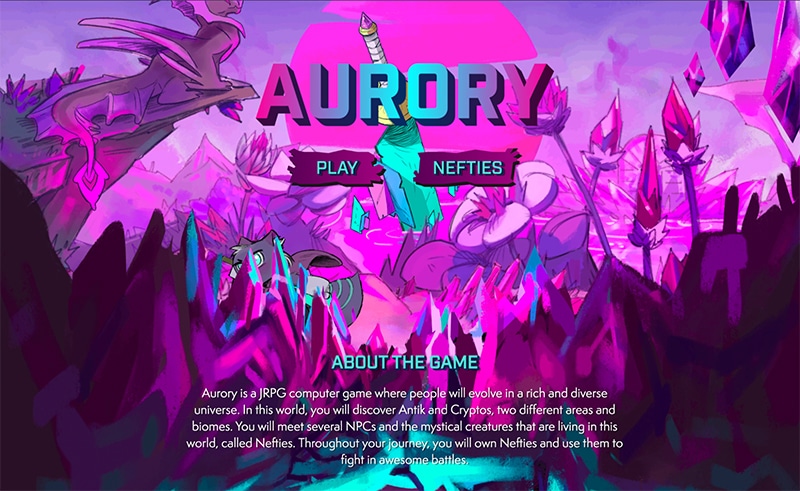
Hot on the tail of Star Atlas is Aurory, ranked #33 (#367 overall) for most traded gaming tokens based on present CoinMarketCap analytics. Aurory is a single and multiplayer role-playing desktop game where gamers explore a rich retro-futuristic universe of biomes named Antik and Cryptos.
The main creatures in this Japanese-inspired game are known as ‘Nefties,’ along with other unique non-player characters players can interact with or accompany in numerous engaging quests and battles.
Gamers can build their own Nefties, which they trade as NFTs primarily on Serum, one of Solana’s leading decentralized exchanges. The game’s native currency is AURY, which players can utilize for trading NFTs and purchase a range of in-game items like skins, cosmetics, consumables, etc.
Presently, AURY is worth $9.71. Aurory’s developers have stated AURY will also act as a governance token in the future.
3. Genopets (KI/GENE)
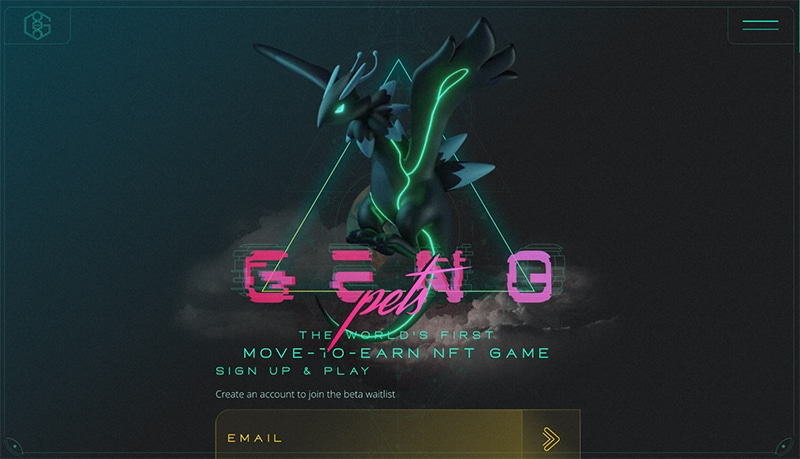
The concept of play-to-earn has already been disruptive in gaming. However, Genopets takes it up a notch by being the world’s first ‘move-to-earn’ or ‘move-to-play’ NFT game.
At its core, Genopets is about incentivizing active lifestyles, making it possible for anyone to earn crypto for staying lively every day. The game tracks a user’s step data as they move around with their phone and fitness wearables to create a unique personal ‘digital spirit animal’ or Genopet.
This Genopet is a generative NFT that users evolve through experience with more real-time physical activity. You can also nurture and battle this Genopet and customize its type, performance, and aesthetics.
Afterward, you can sell this NFT in an open marketplace to reap the fruits of your labor. Genopets uses two tokens, KI and GENE. KI is the platform’s utility and reward token; on the other hand, GENE deals with governance. KI costs $0.22, while $6.60 is the value for GENE.
4. Project SEED (SHILL)
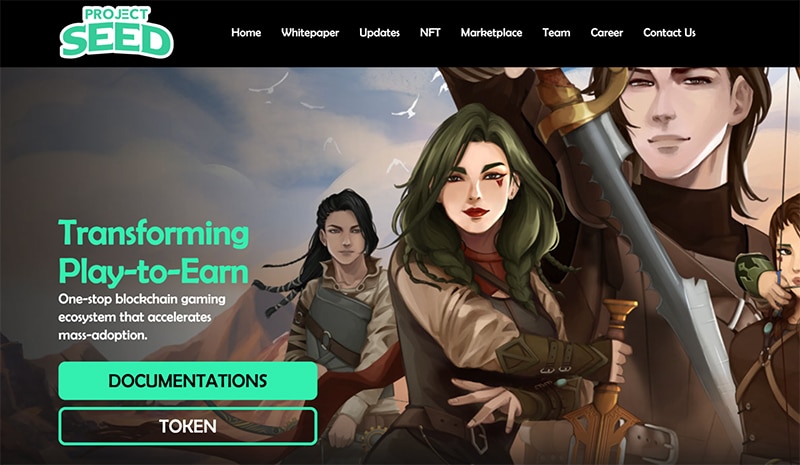
Project SEED is not a standalone game but a mobile-focused ecosystem of numerous GameFi (gaming + decentralized finance) applications. The main components of this project include the ones below.
Game: The main gaming title for Project SEED is named Outland Odyssey, providing adventurous role-playing, multiplayer experiences, guild wars, tournament battles, and quests.
DeFi: Project SEED provides a wallet, staking, collecting of rare NFTs from Outland Odyssey (and to-be-released games), lending, and more.
Game studio: An innovative team of gifted game developers/designers.
DAO (decentralized autonomous organization): Participants govern the ecosystem through public voting and influencing future game development. The platform’s utility token is SHILL used for all in-game transactions and governance purposes.
5. SolChicks (CHICKS)
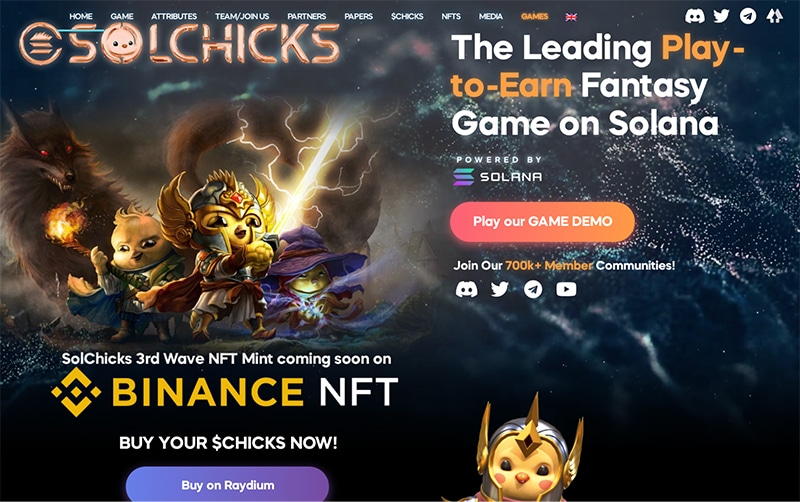
SolCchicks is a fantasy NFT player-versus-player and player-versus-environment game centered around adorable ‘warrior chickens’ of the platform’s namesake. The main story arc concerns the home planet, Chicco, which has been attacked by The Solfox, an intergalactic threat.
The remaining SolChicks have now fled to a new home. One of the main elements is the PvP battles which raise the experience points of each unique SolChick and where gamers can also win prizes.
A leaderboard shows the strength of each battle chicken, providing an incentive for gamers to level up their characters.
Players can also participate in life-like activities in the virtual world such as breeding, farming, owning land, acquiring weapons, forming part of gangs, and participating in occupations.
The game’s utility token is the aptly named CHICKS token, presently worth $0.04.
6. MonkeyBall (MBS/SCORE)
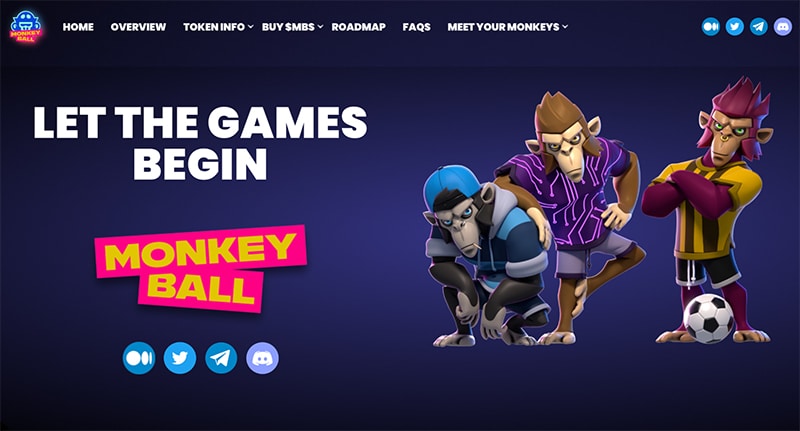
If you ever imagined monkeys playing football, MonkeyBall has you covered. MonkeyBall is a turn-based, arcade-style mobile and desktop game where users play as monkeys, either as goalies, defenders, midfielders, or strikers.
Players go through 12 rounds for every match with various moving, passing, shooting, dribbling skills, along with special moves. MonkeyBall has three game modes: PvE, PvP, and team vs. team.
Like Genopets, MonkeyBall has two digital currencies, MonkeyBucks (MBS) and SCORE. Among other things, MBS is used to reward the winning teams, stadium owners, and even spectators. SCORE is the game’s governance token.
Final word
Most experts agree that 2021 was the ‘kick-off year’ for GameFi. 2022 is expected to be even more eventful with inventive projects combining elements of gaming, the metaverse, NFTs, and decentralized finance.
Gaming is understandably a highly demanding application in cryptocurrencies. Developers look for blockchains that can perform at incredibly high speeds with super-low costs.
Fortunately, Solana has, so far, proven to be a perfect match as the blockchain can handle several tens of thousands of transactions per second at fractions of a cent. Therefore, we should certainly see more gaming projects on this network in the near future.








Leave a Reply